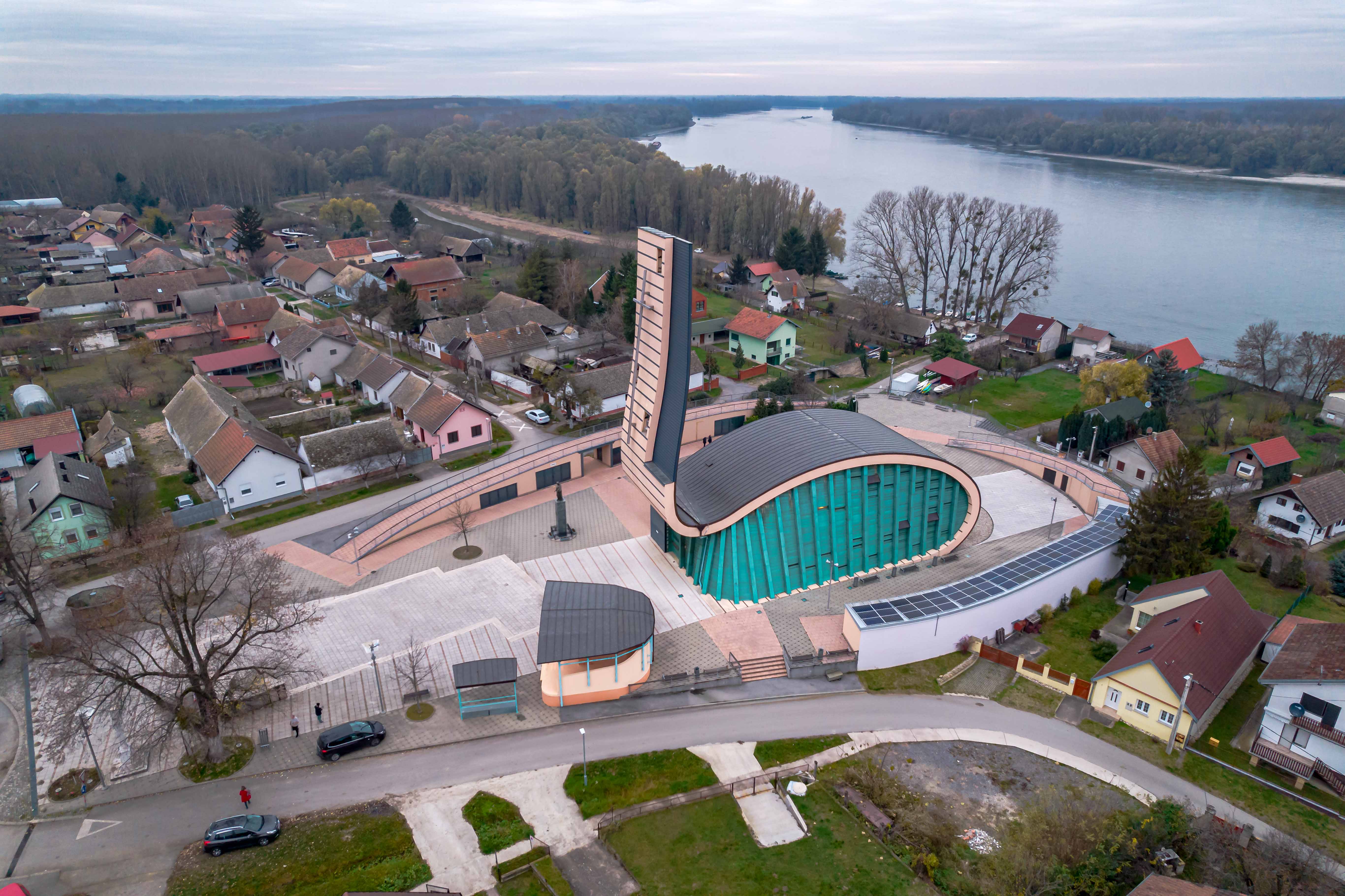Croatian Tourist Board Director says Tourist Season is Great
ZAGREB, 16 August, 2022 - Croatian Tourist Board (HTZ) Director Kristjan Staničić told the national television (HTV) on Monday evening that the tourist season was great and some indicators showed that the results were already close to those in the record-breaking 2019.
Currently, there are about 1.1 million visitors staying in Croatia, Staničić said.
He expected even higher revenues than in 2019.
Also, the Croatian National Bank (HNB) forecasts that the revenues from the tourist industry could reach € 11.3 billion, or 7% (€800 million) more than in 2019.
Staničić expressed satisfaction with also a higher number of fiscalised receipts and revenues from the tourist trade.
He, however, would rather wait for the end of the season to see the final results.
The HTZ director also commented on some complaints about too high prices of the services along the Croatian coast and said that every price rise must be followed by the upgrade of services and products.
Staničić said that the HTZ is preparing a new strategy for sustainable tourism, and this document should soon be finished.
Croatia's Mihaljević European Champion in Men's Shot Put in Munich
ZAGREB, 15 August, 2022 - Croatia's shot put record holder, Filip Mihaljević, won the European title in the men's shot put event in Munich on Monday evening, with the winning distance of 21.88 metres which he had in his last throw.
Serbia's shot-putter Armin Sinančević won the silver with 21.39 metres in his fifth throw, and Czech Tomaš Stanek grabbed the bronze (21.26 metres).
The 28-year-old Mihaljević already had medals from the world and European indoor championships.
On Monday morning Croatia's long-distance runner Matea Parlov Koštro won the silver medal in the women's marathon at the 2022 European Championships taking place in Munich.
Vjekoslav Prebeg, Indicted Croat in Donetsk, Faces Death Penalty
ZAGREB, 16 August, 2022 - Croatian Vjekoslav Prebeg, who is together with Briton John Harding, and Swede Mathias Gustafsson, accused by the Russian separatist authorities of being a mercenary, is facing the death penalty, Reuters quoted Russian media outlets as reporting on Monday.
"A Russian-backed separatist court in eastern Ukraine's Donetsk charged five foreign nationals captured fighting with Ukrainian forces with being mercenaries on Monday, saying three could face the death penalty, Russian media reported," according to the Reuters news agency.
Prebeg, Harding and Gustafsson were captured in and around the port city of Mariupol, and they face a possible death sentence under the laws of the self-proclaimed Donetsk People's Republic, Russian state-owned news agency TASS reported.
On 10 August, Croatia's Foreign and European Affairs Ministry strongly condemned the indictment against Croatian national Prebeg, who has been detained in the self-proclaimed republic of Donetsk.
Croatia "rejects the indictment and does not consider it to be legally sound because it is contrary to international law and conventions on the treatment of captured civilians and prisoners of war," the ministry said in a press release a few days ago.
The ministry and competent services are in constant contact with the Ukrainian authorities and other partners in order to shed light on the case and have Prebeg released, the ministry said on 10 August, adding that it has been in touch with the detainee's family.
According to Reuters, two more Britons, Dylan Healy and Andrew Hill, were also charged but do not face execution. All five of the accused pleaded not guilty to the charges, TASS reported.
It cited the judge as saying that the trial would resume in early October.
New Structure for Pula Tourism as Younger Visitors Dominate Scene
August the 16th, 2022 - The Pula tourism structure has changed somewhat, with the scene currently being dominated by much younger tourists than back during previous years.
As Morski writes, on the gorgeous Istria peninsula, the number of tourists this weekend exceeded a very impressive 300,000. Although the Istrian peninsula is mainly oriented towards family tourism, the number of younger guests, aged 18 to 30, is now increasing. Pula tourism is based precisely on the "city break" category, that is, it has become a destination for more frequent and shorter stays.
''In Italy, accommodation is way too expensive, here we found a house at a good price. We just arrived, we saw some beautiful beaches, the city is beautiful,'' said visitor Mateo.
''If we compare what we've currently got with 2019, which was the last pre-pandemic year, we see that we have a few percent more young people making up the Pula tourism picture, which if we look at July and August - when the numbers of people in the city are higher - it isn't a negligible percentage,'' pointed out Sanja Cinkopan Korotaj, the director of the Pula Tourist Board.
Manifestations and events that have never been seen before are not negligible either. Music week, wine city, and now a burger fest with a series of concerts in the Arena and on city squares are drawing more and more visitors to this Istrian city, and the bars, restaurants and cafes are full.
There are 25 thousand guests currently staying in the City of Pula. Private accommodation units are now sold out, and young people have started to fill the city's numerous hotels as well.
''We decided to stop in Pula on our visit to Croatia because we had heard only the very best things about the city. We visited many places there, and the beaches are beautiful,'' said Camilla.
This new structure of guests making up Pula tourism's picture, with a significantly higher proportion of young people, also increases costs for hoteliers, they say.
''Because they stay in one destination for a shorter period of, they want to see as much as possible in the shortest possible time, so in a way we're reduced to a type of station tourism. Because we have to change everything every day, bedding and everything, this creates additional costs for us,'' emphasised Deniz Zembo, a hotel owner from Pula.
Recently, hostels have also started to spring up, now there are about 20 of them in the city and they are getting better every year.
''We are talking about a lot of young guests who came of age during the coronavirus pandemic, they couldn't travel, and we are also talking about guests who are starting families and who will come to Pula with their families,'' added Boris Zgomba, the president of the Association of Travel Agencies within the Croatian Chamber of Commerce (HGK).
For more, make sure to check out our dedicated travel section.
Pula Aquarium Gets New Resident Which Changes Own Gender
August the 16th, 2022 - The Pula Aquarium, known for its efforts in conservation and the rescue and rehabilitation of all sorts of Adriatic marine lifeforms, has a new and very interesting resident which can change its own gender every eight years.
As Morski writes, over more recent days, the much loved Pula Aquarium presented to the public the third largest fish of its future tropical lineup, a Humphead wrass named Napoleon (Cheilinus undulatus), the largest bony fish which naturally lives on coral reefs.
The Humphead wrasse is an unusual looking fish which stands out for both its colour and its size, and it got its name from the large hump on its head that resembles Napoleon Bonaparte's hat - hence the name.
What is rather remarkable about this fish, is the fact that after the eighth year of its life, it changes its gender from female to male, and during this sex change, the colour of the body also changes - from orange-red to dark blue-green. This species is extremely important for the health of coral reefs because it feeds on an animal known as the crown-of-thorns starfish (Acanthaster planci), which eats coral and given the chance, destroys these gorgeous reefs.
Humphead wrasse are a very widespread Indo-Pacific species, they reach an impressive body size of up to 2.2 meters and a weight of 191 kilograms with a lifespan of up to 32 years. It is quite a rare fish, but despite that, it is still unfortunately hunted for its tasty meat, and according to the IUCN, it is now considered an endangered species as a result of that. Due to overfishing, their population has decreased by a worrying 50 percent in the last 30 years alone, Aquarium Pula explained when discussing their new resident, Napoleon.
For more, make sure to check out our dedicated lifestyle section.
Numerous Croatian Laws Adapted as Eurozone Accession Draws Closer
August the 16th, 2022 - Numerous adaptations of Croatian laws are coming into force as Eurozone accession draws closer and closer, set to take place on the 1st of January, 2023.
As Poslovni Dnevnik writes, due to the imminent introduction of the euro as Croatia's official currency, numerous Croatian laws are being adjusted, the changes of which require to be put through at an urgent procedure due to quickly approaching deadlines.
Over the coming days, the draft proposal for changes to the Law on Value Added Tax will be publicly discussed, and in addition to the provisions that are being changed due to the switch to the euro, the already announced extension of the application of a reduced VAT rate, which should alleviate inflationary pressures and the negative impact on growth, is included in the same package. The latter should have a positive influence on the price of energy and the standards of people and of the overall economy.
At a rate of 5 percent, the supply of heating from thermal stations with accompanying fees, as well as the supply of firewood, pellets, briquettes and wood chips will be taxed in the period from the entry into force of the amendments to the Act until March the 31st next year.
When it comes to changes in the Croatian laws directly related to the imminent introduction of the euro in January, adjustments related to, for example, the threshold for the acquisition of goods within the European Union (EU), the threshold for registration in the register of VAT payers, the value of deliveries up to which a taxpayer can be a quarterly VAT payer and similar items are implied.
As part of the assessment of the effects of the legal changes, which the Ministry of Finance forwarded to the e-consultation, it has been stated that "it isn't possible to predict the timing of the full achievement of the outcome, but certain effects in the form of easing price increases are expected after the entry into force of the proposed provisions.''
By extending the application of the reduced VAT rate, enterprises who supply the aforementioned energy products will be taxed at a flat 5 percent rate, with the fact that they will need to independently decide how to direct the difference caused by the reduced rate.
"Since companies are free to set their own market prices, there's a possibility to maintain the same price levels we've got now," the explanation stated.
For more, make sure to check out our dedicated politics section.
Savings Could be Made With More Generic Drugs on Croatian Market
August the 16th, 2022 - Replacements of certain medicines are set to arrive on the Croatian market as making savings becomes extremely necessary in the enfeebled Croatian healthcare system.
As Poslovni Dnevnik/Josipa Ban writes, counting the pennies within the wider Croatian healthcare system, especially in the consumption of medicines, is now more needed than ever. We've been witnessing accumulated debts for medicines for decades now, which, after numerous rehabilitation attempts by the Ministry of Finance, are still far from reduced. In fact, they only grew enough to reach slightly more than six billion kuna at the end of April this year.
HUP - the Association of Pharmaceutical Manufacturers have been warning about some of these debts for some time, noting that they definitely can be reduced. The Croatian healthcare system's annual savings could rise from the current 300 million to as much as one billion kuna if consumption were to increase and the procedure for including generic drugs on HZZO's list of drugs for the Croatian market was finally accelerated.
There are some substitute drugs that come to the Croatian market when the patent rights to the original drug eventually expire. As their placing on the Croatian market means more competition, the price of the medicine also drops at the same time. The situation here, at least according to data from back in 2019, is that 61 percent of the volume in the consumption of prescription drugs across the Republic of Croatia is made up of generic drugs, and they only account for 5% of the total healthcare sector's budget.
"Although this percentage has been increasing over the years, it's still somewhat lower than the EU average, which stands at 67 percent. This shows us that there is still a great potential for the use of generic drugs in this country,'' they emphasised from HUP- the Association of Medicines Manufacturers, whose members, in the period from 2010 to 2020, invested a total of 5.4 billion kuna. As far as biosimilar medicines are concerned, the situation is much worse, and back in 2019 they occupied a modest 13 percent of the Croatian market.
A complicated procedure...
One of the reasons for the lower consumption of generic and biosimilar drugs, which causes higher expenditures for such medicines, is the procedure that manufacturers must go through in order to get on HZZO's drugs list.
Jerko Jaksic, president of the PharmaS Management Board and president of the HUP Association of Drug Manufacturers, explained that the process of placing a generic drug on the Croatian market takes approximately one to two years.
"The first stage is the registration of the drug with HALMED or, for biosimilar drugs, with the European Medicines Agency (EMA). After approval from HALMED or EMA, it takes up to six months for the HZZO to place the drugs on their list. Although the situation is somewhat better than it was around ten years ago, that part of HZZO could and should be accelerated. What I mean by that is that following HALMED and EMA approval, these medicines should automatically be included in the lists of medicines, without any additional administrative steps because there's no need for them. Unfortunately, here too we have an example of resistance to changes and adaptation of the system, as well as the classic slowness of the administration,'' pointed out Jaksic, adding that automatic inclusion would speed up processes and the arrival of medicines on the Croatian market, as would cheaper drug therapies for patients in three to six months.
"It would also bring savings of several tens of millions of kuna on an annual level for the entire Croatian market," said the president of the PharmaS Management Board. HUP noted that the role of generic and biosimilar drugs is extremely important for both the healthcare system and the patients themselves.
"In fact, these drugs make many key therapies available to more patients, and for the same or at a lower cost than before their introduction. For example, two to three boxes of prescription drugs issued in Croatia come from the generic industry, and the share of generic drugs in the cost of all drugs is only 27 percent. If we look at the pharmacy system, the share of generic drugs is 65 percent, and this accounts for less than 40% of the drugs budget," they explained.
Great potential
In addition to all of the aforementioned, there is no fear for the patient because prescription drugs and generic drugs are the most organised part of the healthcare system. Jerko Jaksic noted that their importance has long been recognised by GPs. However, hospital doctors are not yet following suit.
"Hospital doctors have a lower level of knowledge of generic and especially biosimilar therapies, they also lack a developed awareness of the financial savings they can enable. There's a great untapped potential there, above all in the sense of using cheaper generic and biosimilar therapies in order to reduce costs for hospitals,'' said Jaksic.
There are, therefore, several mechanisms that we must change in order to accelerate the introduction of generic and biosimilar drugs on the Croatian market, and thereby contribute to significant savings.
"It's necessary to systematically implement the existing regulations for the determination of the price of drugs, to include generic drugs on HZZO's drugs list faster, and to enable the faster penetration of generic and biosimilar drugs into the wider hospital system,'' the HUP Association of Drug Manufacturers believes.
With these measures, along with measurements of treatment outcomes, they say, savings in the healthcare system can reach up to 1 billion kuna per year. So, the ruling party has a solution. But is the will there?
For more, make sure to check out our dedicated lifestyle section.
Luxury Hospitality Expert Zoran Pejovic on Split Tourism Development
August 15, 2022 - Continuing our look at how to improve tourism in Split, one of the city's tourism pioneers, Hotel Development Specialist and Expert Tourism Consultant Zoran Pejovic of Paradox Hospitality, offers his thoughts.
TCN's recent editorial Is Split Tourism 'Strategy' Killing the Goose with the Golden Eggs? attracted quite a lot of attention, as we tried to uncover how Split - which has grown exponentially as a destination over the last decade - has been attracting a lower class of drunken tourist in recent times, whose actions have flooded the TCN inbox with requests from expats, locals, and tourism businesses to try and highlight the issues with a view to finding solutions. I am very grateful to Mayor of Split, Ivica Puljak, Split Tourist Board Director, Alijana Vuksic, and legendary tourism consultant Mario Seric, for all putting their views in the editorial which you can read in the link above.
Their thoughts were followed by a great interview with the founder of the ULTRA Europe Festival, Joe Basic, whose vision was fascinating, as were his practical solutions to improve the situation relatively quickly and painlessly. You can read his interview here.
Next up, one of the pioneers of luxury tourism in Croatia, the man who brought the wine bar to Split (did you know that they did not exist 10 years ago?), and a friend I have known for 10 years, as we have watched the direction of Split and Croatian tourism over many a glass of wine and beer. Zoran Pejovic of Paradox Hospitality is not a man who does things by halves, and the Paradox Wine and Cheese Bar, Paradigma fine dining restaurant, and Maslina Resort on Hvar are just three examples of him pushing the boundaries of quality and innovation in Dalmatia in the last decade.
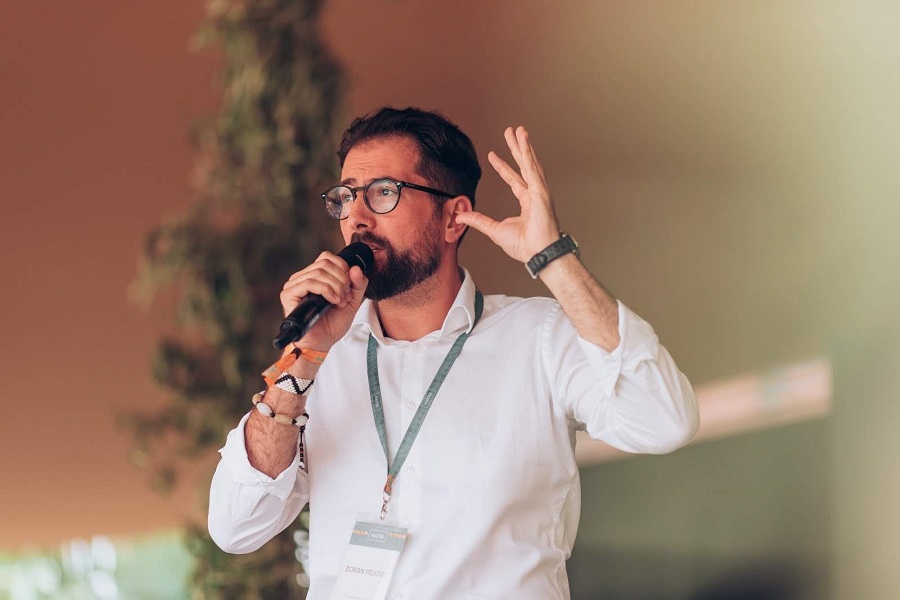
1. Take us back a decade. Paint a picture of Split as a destination. What attracted you to move there?
My decision to move to Split was a concoction of many different, unrelated global and personal events. It involved, among other factors “the coming out” of the global financial crisis, me having a best friend in Split, and my thoughts on how Split obviously must be the center of tourism in the Adriatic, given its geography, history, and culture. I have been coming to Split ever since 2001, and in those early years was always amazed and flabbergasted how most of the restaurants in the city center took August as their collective annual leave. Mind you, I was living in Dubrovnik back then, which was already doing very, very well, and the summers felt like a festival of tourism while Split was firmly outside of the tourist maps. However, in the years leading up to my move to Split, I was living across the globe and was very unfamiliar with the state of the industry.
I remember asking Marko, my partner to be in our common hospitality venture, if he could write up a list of the five best restaurants for me to visit on my arrival in Split, in December of 2011. I have asked the same for the wine bars, hotels, and so on. He came back with a list of three restaurants of which two were konobas, one hotel, and zero wine bars. I then asked him to ask his colleagues, all in the top management positions in Splitska Banka to write up their lists. They came back with the same lists. I was shocked and at the same time certain that Split had to be the next Barcelona. It was a platform that just had to be upgraded with the right mix of hotels, restaurants, and wine bars, and alongside the specialized destination management companies focusing on culture, adventure, and experiential offerings it was destined to be successful on all fronts.
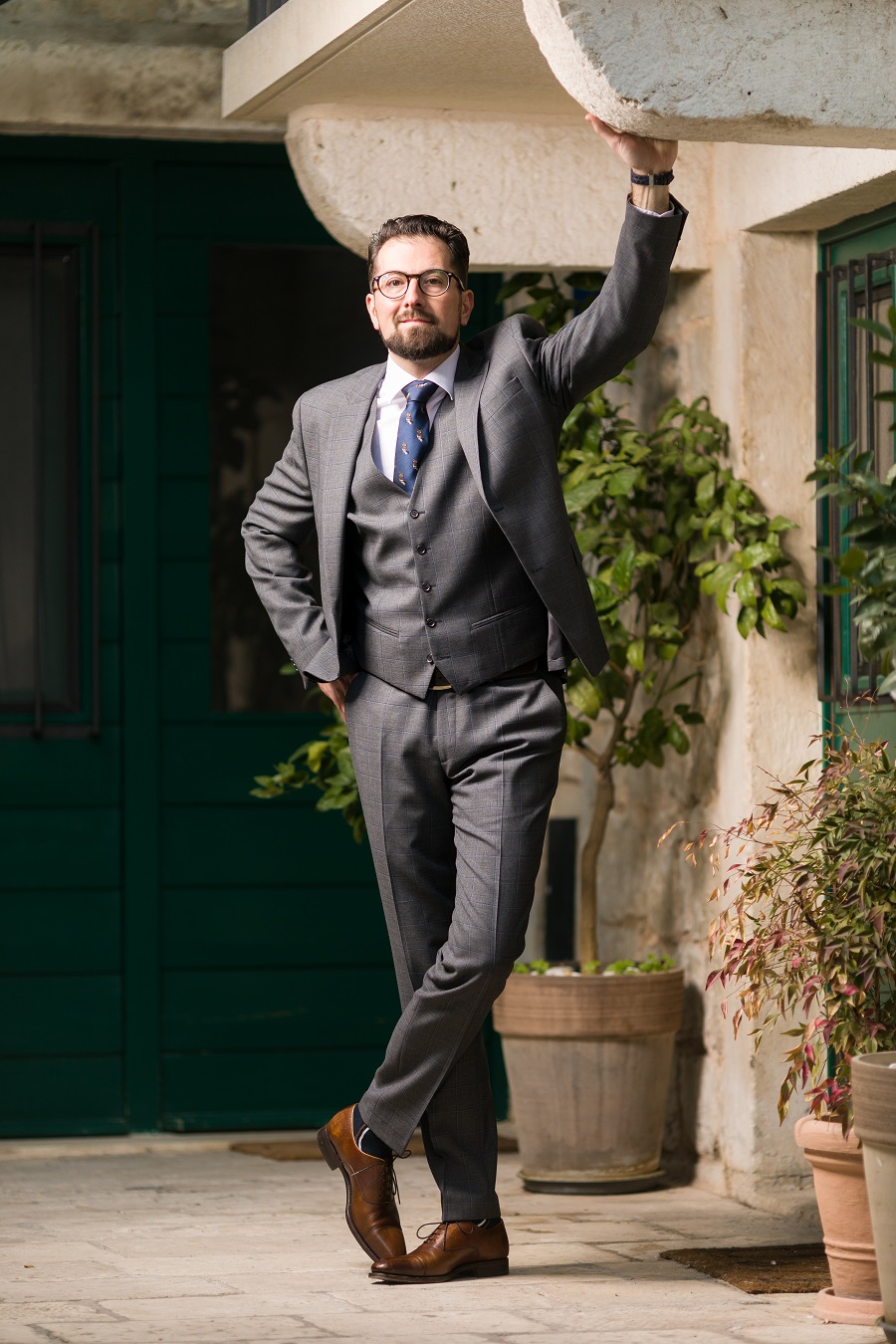
(Photo by Nikola Radovani)
2. You brought the wine bar to Split, a true pioneer. Tell us about that, and how things developed due to your initiative. Are you happy with the results?
Firstly, we could not have opened a wine bar, as such categorization did not exist within the rules and standards on classification, minimum conditions, and categorization of catering facilities. There was a pub as an option, mind you, not a wine bar. I don’t believe that has changed in the meantime. We have faced so many weird questions and constraints that we have decided to officially name our konoba, dressed as a wine bar, Konoba “Wine & Cheese Bar Paradox”. A lot has happened right off the bat. People thought that we were crazy offering 50 wines by the glass, but by the next summer, there were several new places with a similar concept, some even copying the menu to the t. The winemakers were very happy. I remember Andro Tomić telling us that if someone should be getting the government subsidies, it was people like us, not them, cause if we sold more wines, and promoted the wine culture better, they would do just fine. We had amazing support from the Hvar winemakers in those early days. Soon after, we started growing our loyal following in Split among the locals. We held hundreds of events over the years targeting the local wine lovers, expanding it later to wine and music lovers. And cheese as well, of course. Ah, that was another funny thing. We were ridiculed for serving cheeses with jams, but only for about two months. After that, it became the standard way of serving it all around.
I had some industry colleagues coming and sitting for hours in our wine bar and just observing how we were doing things. It was a very hopeful and promising period. I was working like a nutcase but was looking favorably into the future.
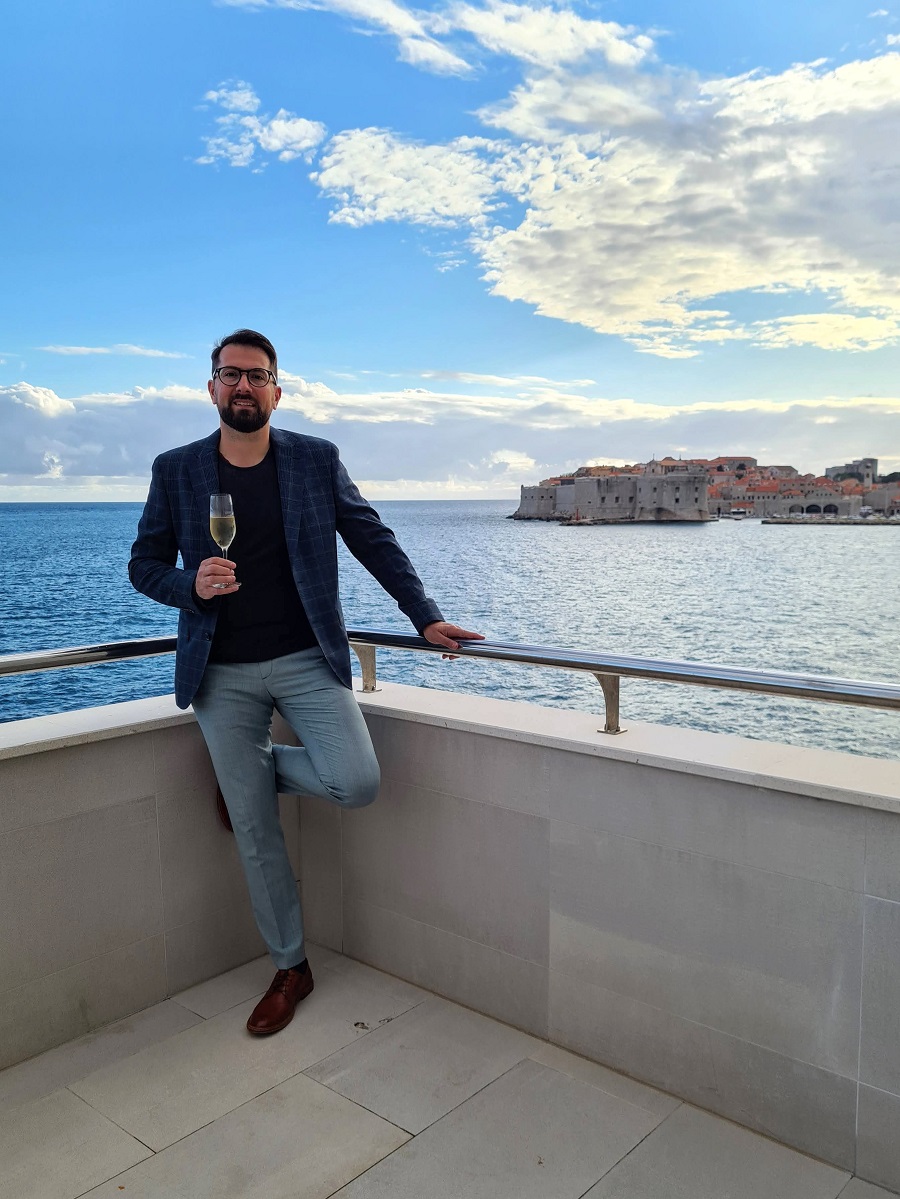
3. How do you see Split as a destination 10 years later compared to back then?
It is easy to call it a missed opportunity, but history does not move forward in such a linear direction. Things are way more complicated, and I refrain from offering simple answers to complex problems. There have been so many externalities that one could not have predicted back in 2012. Covid-19 is one example that many would cite as the defining global event of the past ten years. Another one, perhaps even greater than Covid-19 is the role of social media in the life of a destination, a restaurant, or a hotel, and that rise of influencing fast-changing trends. Then there is the entire change in the demographics on the side of the consumers, as well as on the side of the providers, and the industry, globally losing the appeal it had for many young people as the industry of choice. I could go on with the global changes that affected us full-on, despite us being on the map only tangentially in relation to the epicenters of those changes.
Then, you have a whole host of national externalities that are outside of the reach of Split’s jurisdiction, from well-documented administrative loopholes to the fact that the apartmanization has been seen as a sort of a social welfare system, avoiding the introduction of the property tax, and even taxing the apartment rentals at such a positively discriminatory rate, that any other investment seemed foolhardy. On the other hand, we have seen a roulette of tax codes in the restaurant industry moving from 22% to 23%, to 24%, to 25%, to 10%, to 13% to 25%, or some sort of that combination. Anyway, this is not to say that the local industry and the local politicians are not to blame, but truth be told, it was a whirlwind of learnings and failures on the part of the industry, with many having absolutely no previous experience and having to learn overnight in an often hostile environment, producing a barely edible, partially overcooked, but mostly undercooked mix of everything, garnished with a significant number of short-term speculators and a side dish of a non-edible mash of political shenanigans.

Sure, I would have loved to see how Split would have developed should Marjan have opened in 2014 or so, as announced back in 2012, bringing the large-scale yet upscale operation to the city with the greater off-season and MICE opportunities, with Hotel Amabasador following suit, with Bellevue being the flagship historical hotel, with Villa Rossina pushing the boundaries in the luxury villa accommodation, with some of the Žnjan hotels coming to life and so on. That could have pushed the city wider and longer, spatially, and timewise, relieving some of the pressure on the historical center as well as dispersing more travel to the low season.
To answer your question, Split of today is a mish-mash of everything, that attracts a mish-mash of guests, without clear destination branding, without the industry coming together in some cohesive manner, but a destination that yet can deliver over many decades to come.
4. Split has changed enormously in the last decade, with an explosion of tourism, a lot of it a younger crowd with access to cheap alcohol and pub crawls through the UNESCO World Heritage Site of Diocletian's Palace. What are your thoughts on this?
What can I say? It is not my crowd, and it is not how I develop my businesses, but these are the guests we have today, partially due to our failings, partially due to the pent-up demand among the young people being locked up for a couple of years. Some people are behaving like there is no tomorrow. This is more than a Split problem. As long as they are behaving within the legal bounds, I can’t fault them. I am not the one to throw moral judgments around. I don’t believe that drinking yourself into oblivion and losing memories tend to make people happy, but that seems to be the name of the game for many young people in these months following the two-year pause on social life. Some of it will go away naturally, some of it we will have to forestall with clearer communication, and some we will have to convert to different types of activities and tourism. That is the part that rests heavily on the shoulders of the industry leaders in the city.
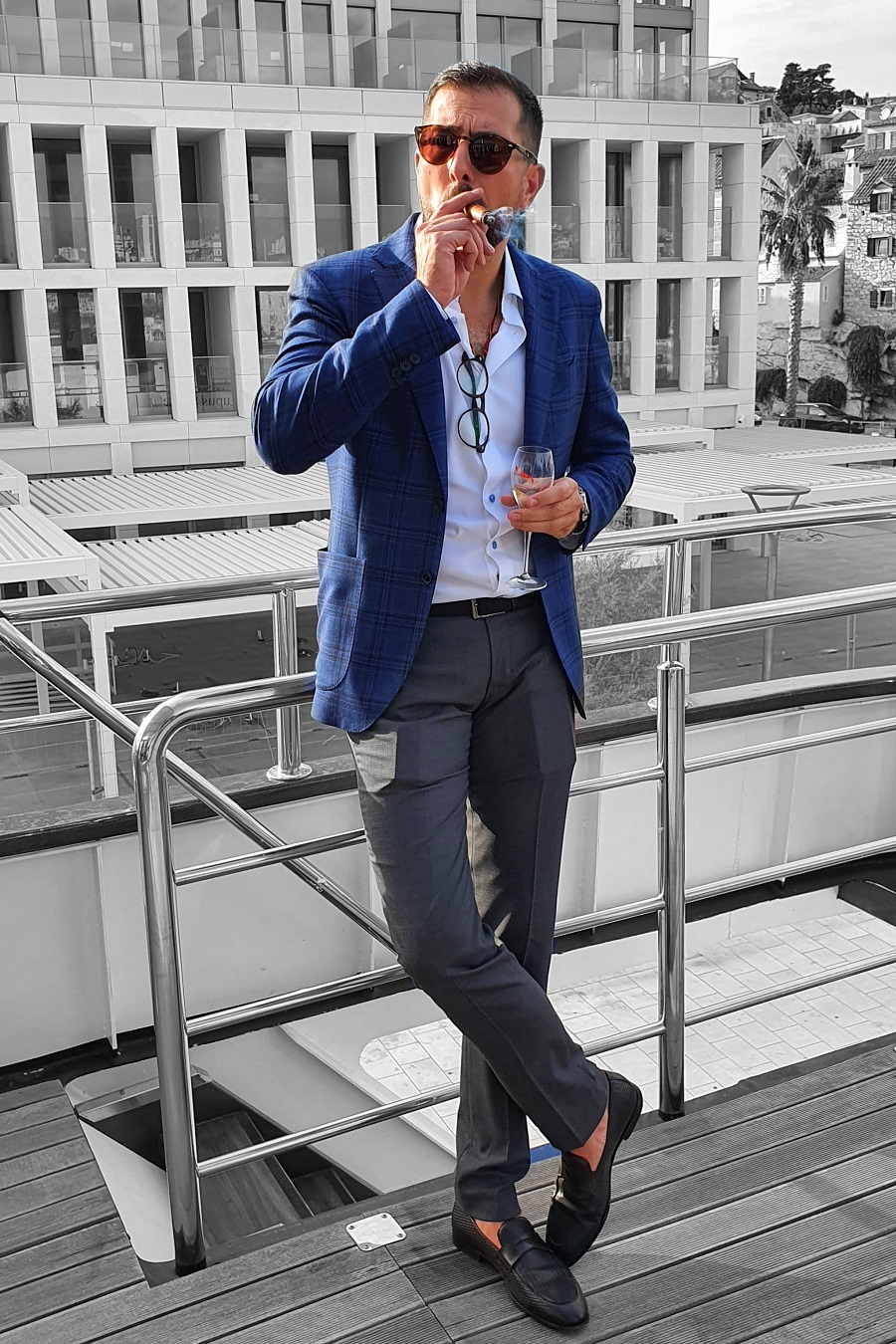
5. Several people point the finger at Ultra Europe for starting this. Do you agree? And if not, why not, and what is responsible?
That would be exactly what I said earlier, explaining the complex situation with a simple answer and pointing a finger at everyone’s favorite villain. I think that I have explained the confluence of different trends, externalities, and local failures in some detail already.
6. What kind of destination should Split be, and what is the ideal profile of tourist?
There is no such thing as the ideal profile of a tourist. Things change and evolve and what a typical upscale traveler looked like twenty years ago, how they look today, and how they will look like twenty years from now are completely different.
Split is not a little coastal town. It is the largest city on the Eastern Adriatic, and it needs to attract all different sorts of tourists and play on all of its main points of distinction, from the historical and cultural backgrounds to the extremely favorable geographical positioning, to sports, and music and gastronomy. Split needs to lead the way, and the only way it can achieve that is through education, formally with better hospitality schools, and informally through the successful stalwarts of the industry, aka internationally recognized hotels and restaurants that are pushing the boundaries of service excellence, firmly rooted in the continuity of living and sense of place that is our key point of distinction. We need local heroes of the industry, but also we know how Split treats its heroes often, so perhaps we skip that recommendation.
It takes decades to achieve this goal, while the goal keeps changing. I understand that this may sound like a word stew that means nothing, but that is the best I have to offer right now.

7. You are the Mayor of Split and Split Tourist Board director in one. Tell us what your strategy is to develop the city's tourism.
I will share these thoughts directly with the Mayor of Split.
8. 3 quick wins to improve the current situation?
If you are referring to the recent scenes from the historical center of Split, that can be partially mitigated with a clear communication campaign, meetings with the stakeholders that are propping up this behavior, and enforcing stronger rules with better policing. However, that is not something I think about that much. I am much more concerned about the ways in which we can regain some of the attractiveness as the industry of choice, especially for the young people, which largely sit on the shoulders of the industry; how can we attract more mindful hotel developers, with long term vision and respect for the local community to invest in our city; and how can we fix the existing infrastructural challenges that are causing the same pains for the local and the tourists alike. The other two aspects are something the industry without the help of politics can’t achieve.
9. How do you feel about the direction of Croatian tourism? Is it on the right path?
Someone once said that it is better to use a compass than a map to reach the destination. Well, we never had a map, and the compass is often broken, so we are a bit lost in the storm of other people’s making, and our inability to take control. We are kind of heading in the right direction, but moving very, very slowly. Some people have shown us the way. Here I mostly speak of the winemakers, olive oil makers, and to an extent, the cheesemakers. You might wonder why I bring the world of agriculture when we talk about tourism, but that is exactly our point of distinction: tourism that is born out of agriculture, and the one we don’t see yet, and I hope we get to see, agriculture born out of tourism.
And education, of course, education…
10. And finally, what is Zoran Pejovic working on next? I know you can't sit idle for long...
There is so much going on, some days I feel like I am on a rollercoaster of calls and meetings on future projects. I might have to venture outside of Croatia for a bit, most probably Norway and the USA, as the projects that are in the pipeline in Croatia are just too far in advance for me to make my living, especially given the past two years and the capitulation of our Split ventures under the weight of the external pressure, Covid-19 closure and our lack of readiness to gamble away our reputation through cost cutting, employee reductions and overall compromise of quality, coupled with the internal inability to carry on financing the old ways indefinitely. There are a lot of scars from the past two years, so some international exposure is needed to expedite the healing process, before returning to deliver another flagship project to Croatia, the way we delivered Maslina Resort on the island of Hvar, or the way Paradox and Paradigma led the way in the development of Split’s wine and gastronomical scene.
You can follow Zoran Pejovic on LinkedIn or find him on the Paradox Hospitality website. He is also an occasional contributor to TCN and wrote some excellent articles about tourism during the pandemic.
Read more on the current state of tourism in Split:
Is Split Tourism 'Strategy' Killing the Goose with the Golden Eggs?
ULTRA Europe Festival's Joe Basic Talks Split Tourism Development.
****
What is it like to live in Croatia? An expat for 20 years, you can follow my series, 20 Ways Croatia Changed Me in 20 Years, starting at the beginning - Business and Dalmatia.
Follow Paul Bradbury on LinkedIn.
Croatia, a Survival Kit for Foreigners will be out by Christmas. If you would like to reserve a copy, email This email address is being protected from spambots. You need JavaScript enabled to view it. Subject 20 Years Book
Discover the Croatian Danube: Fishing Village of Aljmaš (Part 1)
August 15, 2022 – The blue, the mighty, the grand, the Danube. One of the most important rivers in the world that was the lifeline of an entire civilisation in Vučedol remains an aspect of life without which life would be unimaginable everywhere along its course. The German, the Austrian, and the Hungarian Danube are well known. It is time to discover the Croatian Danube. From Osijek to Ilok, its course is adorned with picturesque little villages. In part one of the series, welcome to Aljmaš.
Located some twenty-six kilometres east of Osijek and the same distance north of Vukovar, between the slopes of Alma Mons, or Fruška Gora, and the bank of the Danube, this small fishing village patiently awaits the arrival of all who seek peace and quiet. Four streets, a thousand or so houses, one big church, some 350 people. Is that all there is? Of course not. Hundreds of years of history, legends, traditions, and the best fish stew you would ever hope to try. An easy, quiet lifestyle with all that you might need. Even business opportunities.

Photo: Dubravka Petric (PIXSELL)
It has been 785 years since the first mention of the name Aljmaš. The area itself, though, has hosted life since long before, and the locals keep finding remains of Roman architecture to this day. With its geographical position in proximity to the river, the settlement surely played an important role in the Roman empire. A theory excitedly discussed among the locals is that a yet-to-be-located battle between the Romans and the Illyrians might have happened in the valley of Aljmaš itself.
The historical importance of the village also lies in the fact that the well-known Hungarian humanist and poet Janus Panonnius was born in none other than Aljmaš. Though Čazma was previously believed to be his birthplace, his verses confirm that it was indeed “Where the Drava surrounds its name and water to the Danube”. And during the Austro-Hungarian rule, it was the beloved summer garden of Maria Theresa.
As for other popular sources of debate, there is an interesting theory that explores the possibility that Novi Sad in Serbia was built by settlers from Aljmaš, somewhat resembling the New Amsterdam story. In the early 18th century, when the plague was the main threat in Europe, a group of people from Aljmaš apparently sailed out on a raft down the Danube to escape the disease. They might have settled some 130 km east, around the area of today’s Novi Sad. To confirm this theory, the locals point out that the streets of Aljmaš were called sadovi, which is an old Slavic word for garden, and the name Novi Sad, you guessed it, means a new garden. Secondly, Novi Sad, the city is only about three hundred years old, which would correspond to the time of movement.
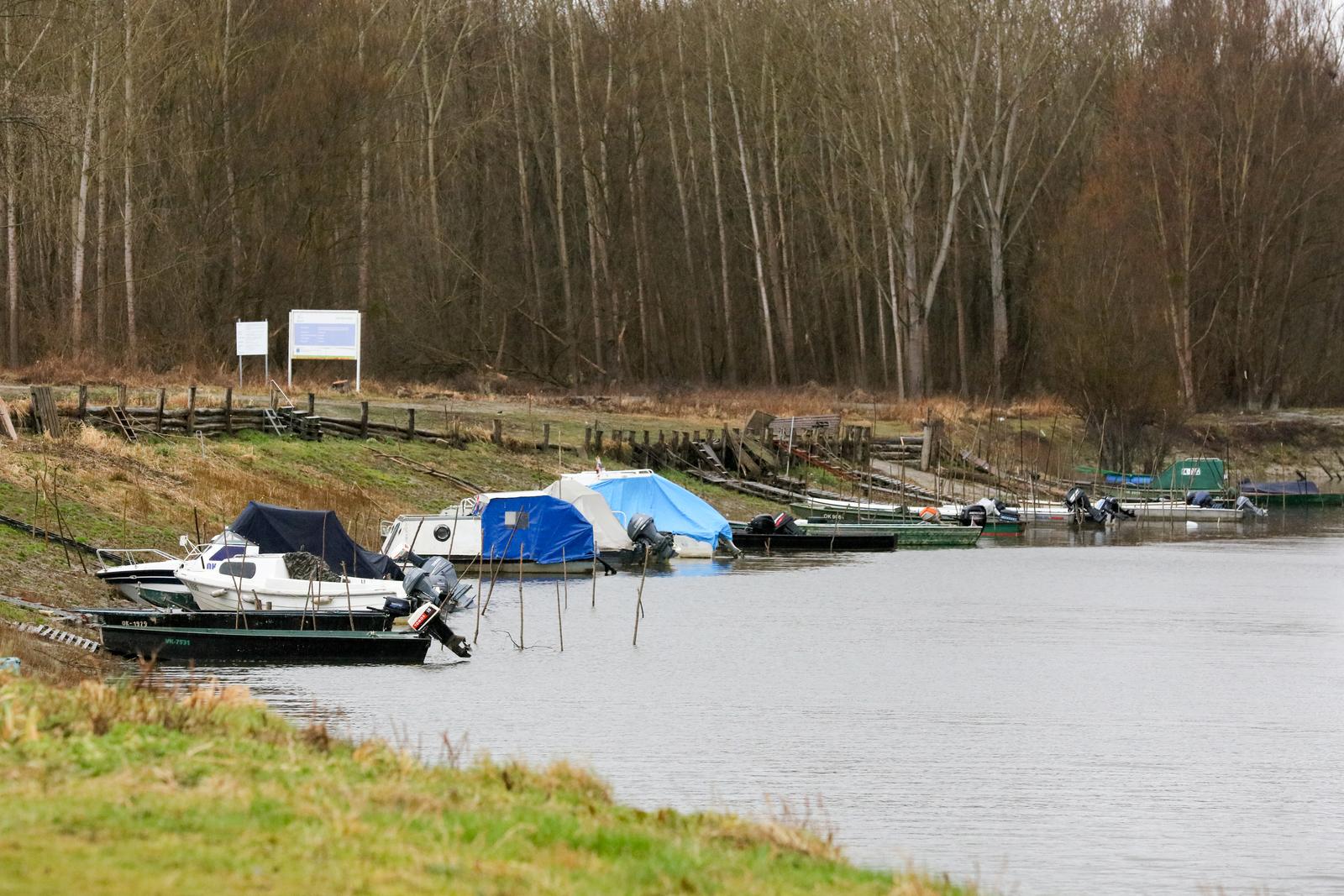
Photo: Dubravka Petric (PIXSELL)
Modern Aljmaš lived its golden age between the two world wars, when 1446 people lived there, who owned 46 businesses, and the village had 2 butchers and 3 bakeries. It was an important port on the way from the Black Sea to Budapest, which, as you can imagine, ensured that the birth rate would steadily grow. It was also an important weekend and summer home for the nobles of Osijek and Vukovar who needed a quiet place in nature, especially those who liked fishing. After the second world war, as well as the Homeland war, the population of Aljmaš unfortunately significantly declined, leaving it at approximately a quarter of what it used to be.
It is, however, slowly being rediscovered. Trying to escape a busy hectic lifestyle, many will naturally gravitate towards picturesque little places like this to spend their holidays, weekends, or retirement, but people have also started permanently moving there to live a relaxed life and raise their children in a safe environment where nature still dictates the way of life.
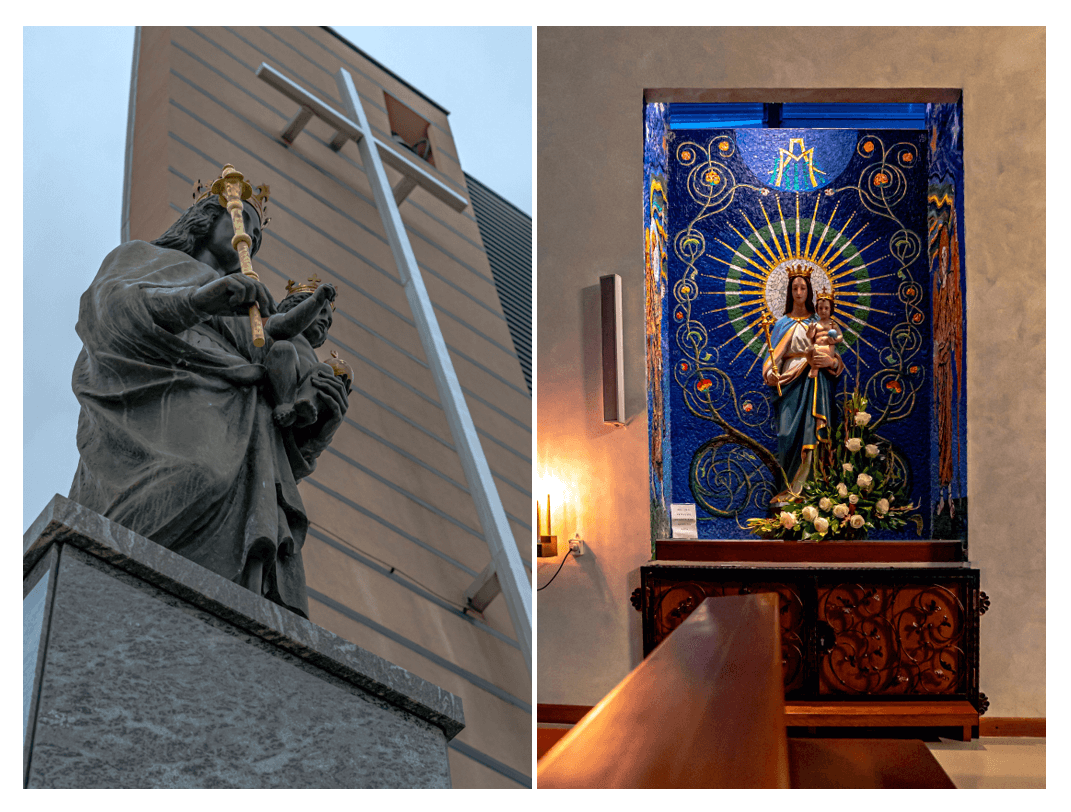
Photos: Steve Tsentserensky
Catholicism has always played a very important role here, so much so that even during the Ottoman rule when many were forced to convert to Islam, Aljmaš remained a Catholic settlement. Nowadays, it is one of the famous places of worship and pilgrimage in the name of Mary. Even though a legend does exist of a sighting of the Virgin Mary, the reason why Aljmaš became her home is different. In 1704, a statue of Mary was brought from the village of Lug in Baranja to save it from the rebellion that was brewing there against the Habsburg monarchy. A humble little church made of branches and mud stood in Aljmaš to provide shelter. Mary has been the symbol of Aljmaš ever since. In 1846 the village church burnt down, along with the statue, only leaving a painting of the former statue. A new baroque church was built, and the bishop Josip Juraj Strossmayer financed a new statue to be made in Vienna. During the Homeland war in 1991, the said church was heavily bombarded and taken down, and the statue was believed to be destroyed. In 1992, however, a Russian UN soldier found the statue with only the crown and a part of one arm missing, dressed it in his vest, and put a helmet on it to conceal it and safely transport it to Osijek. Just like the people of Aljmaš, it spent years in exile. It remained in Osijek until 1998 when it was taken back to Aljmaš. The road, of course, was the Danube. It was taken on a boat, with hundreds of fishing boats following.
Photo: Steve Tsentserensky
With the old church destroyed and the statue of Mary having been returned to Aljmaš, the local government decided to invest in a new place for worship and built the new, monumental church in 2003. It is famous for its architecture, but this does spark debate among the locals. While some think that its modern design draws people in, others disagree since its architectural integrity might not be the best, and it is questionable how long the church will withstand the humidity and the winds from the Danube.
One thing is for sure, though. The church is still an important place not only for the residents of Aljmaš but for many who visit to pray and contemplate. Without a doubt, the most important date remains today, August 15, marking the Assumption of Mary. Year after year, the holy mass in the open gathers thousands of pilgrims. Though it is a quiet celebration, the village comes alive in its former glory with people walking, talking, praying, and the children all gathering around the little stalls for ice cream, cotton candy, or plastic toys.
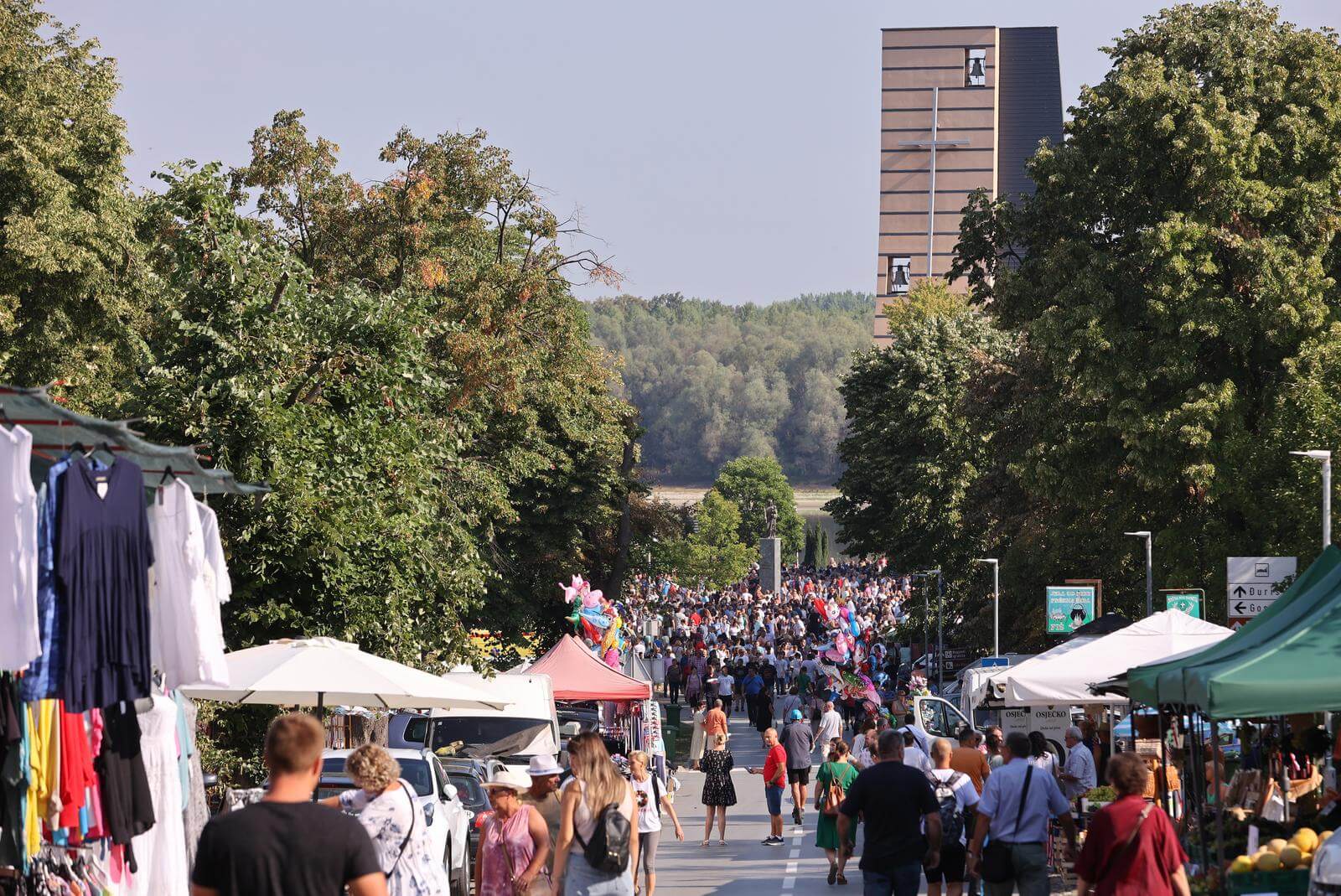
Photo: Davor Javorovic (PIXSELL)
Even though August 15 remains the most important day for Aljmaš, it is not the only day when something happens. The locals gathered in cultural societies make sure that the traditions keep on living, and that daily life is still eventful. To find out more about the local customs and traditions which live on, how the village Google makes sure they know it all, why foreigners keep buying houses there, and when you should make sure you visit, stay tuned for part 2 next week on TCN.
Special thanks to Marina, a tourist guide from Aljmaš, who works hard to keep tradition alive and who happily shared her stories with TCN.
How good is your knowledge of eastern Croatia? Take the CROMADS test above - how many places do you recognise?
For more, make sure to check out our dedicated Lifestyle section.
Archbishop of Zagreb Calls for Defending Family
ZAGREB, 15 August, 2022 - The Archbishop of Zagreb, Cardinal Josip Bozanić, said on Monday the Christian vision of existence was in jeopardy and called for defending the family as society's greatest good.
Celebrating Assumption Day mass at the Marija Bistrica national Marian shrine, he said the Assumption of Mary was deeply rooted among Croatia's believers and that the Christian vision of existence "is in jeopardy and under attack from ideologies whose intention is to condition society and the human person."
Bozanić said that last month in Canada, Pope Francis pointed to the danger of ideological colonisation which was contrary to life's reality and which tried to eradicate tradition, history, and religious ties.
"In other countries, speaking of the family's beauties, Pope Francis called on us to resist theories which try to impose so-called other forms of family and a different way of looking at man, considering that his original diversity manifests him as man or woman. As Pope Francis says, a war is being waged not with weapons but with ideological colonisation which wants to destroy marriage and the family," the cardinal said.
Today's celebration calls on us to be a society open to children, he said, adding that there are positive initiatives on that front, but also "arrogant and inhuman decisions and actions by those who belittle children's real needs and don't protect human life from conception to natural death."
Bozanić called for praying in particular for expecting parents as well as for peace in war-torn Ukraine.
Minister talks inflation, energy supply
The service was attended by War Veterans Minister Tomo Medved, who, commenting on inflation and energy supply difficulties, told the press the government was dealing with those challenges successfully, as it had with the pandemic.
"The government recognises those risks and the challenges we are facing or will face, and we are running the state responsibly," he added.
The Assumption of Mary is a public holiday when believers across Croatia visit Marian shrines.


